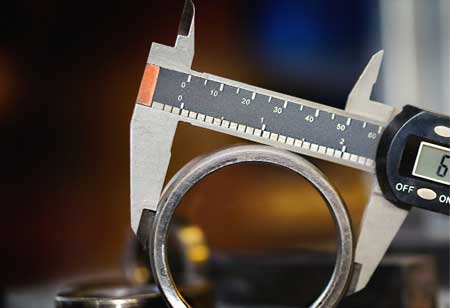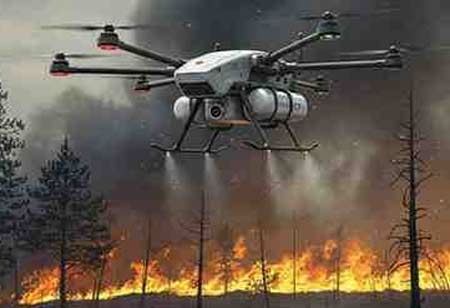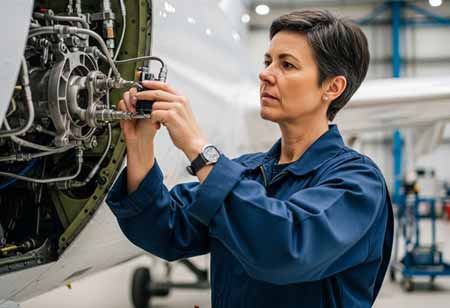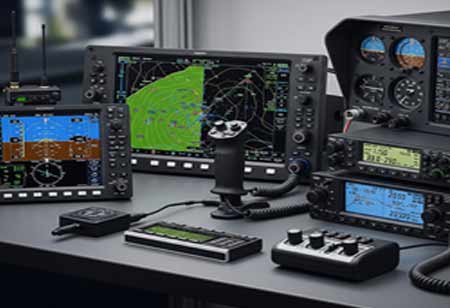The boundaries of precision and technology are being continually pushed in the complex and technical field of aerospace to ensure performance, safety and innovation. Quality assurance and stringent regulatory guidelines demand aerospace manufacturers to develop parts that meet the required specifications. This very need speaks volumes about the importance of metrology in research and development activities.
In an industry where room for error is virtually nonexistent, metrology instruments can impact the outcome at every stage of manufacturing, whether it is the initial planning stage, ongoing research and maintenance or the final assembly. Metrology-assisted assemblies are helping organizations hit the efficiency bull’s eye with shorter production cycles and cost-cutting. This is particularly true as composite parts are increasingly widespread.
In comparison to metals, composites are hard, unforgiving materials that demand precision assembly with tight tolerances to hit the right mark. Ultra-precision metrology solutions, with their 3-D models and digital representations, help manufacturers eliminate scrap and rework. They also help them save time and money by replacing hard tooling structures. This allows users to respond more quickly to technical changes with flexible tooling capabilities.
Employing instruments like laser trackers, computerized numerical control systems and coordinate measuring machines (CMM) will help calculate measurements with micron-level or even submicron-level tolerances to allow early detection of irregularities that lead to costly malfunctions. Engineers can now efficiently spot deviations from proposed design specifications by easily measuring parameters like surface finish, straightness, concentricity and dimensions.
Advancements in technology are opening doors of innovation in the aerospace sector, with manufacturers having access to automated and upgraded systems. Technologies like automated CMMs offer measurement of a wider range of products, including those with complex geometries, heavy or oversized parts and sensitive components.
Handheld inspections are prone to human error, and complicated parts are even more difficult to visually inspect. CMMs remove these issues by reducing subjectivity, improving accuracy and simplify testing and inspection procedures. This versatility makes metrology solutions an essential component for organizations that want to overthrow conventional manual methods and inefficient operations.
Portability is one of the most crucial advantages modern metrology instruments bring to the table. Given the massive and heavy nature of aerospace components and assemblies, transportation of large objects to inspection labs can be time-consuming and expensive. Having portable measuring equipment helps OEMs do inspections easily, reducing time and associated risks.
Smart metrology solutions are also turning tides with embedded temperature compensation algorithms to control material thermal expansion and contraction. Efficiencyhungry companies are heavily investing in solutions that achieve the requisite precision through a wide temperature and humidity range. Building a dedicated temperaturecontrolled lab for quality control solutions is no longer practical with the rise of portable technologies. Adopting the right tools will be the difference between leaders and followers in the market as the industry keeps advancing.
Managing defense and aerospace supply chains is no cakewalk. Materials procured from hundreds of vendors and subcontractors make the selection of a distributor an important step that can impact the end outcomes. Achieving the requisite operational excellence while maintaining quality and cost control can be a significant problem. Raw materials from various sources demand multiple examination methods. The inspection system should be able to handle various components while also having expert knowledge of each unique operation. Because of the nature of the sector and the importance and diversity of materials and parts, inspection in the aerospace industry necessitates the use of different inspection methods that are best suited to the individual application and purpose.
The future of aerospace organizations will be fueled by their ability to invest in thoughtful, advanced metrological solutions. Collaborating with suppliers that prioritize quality and precision will help companies branch out to new markets and lead innovation in the aviation space.









